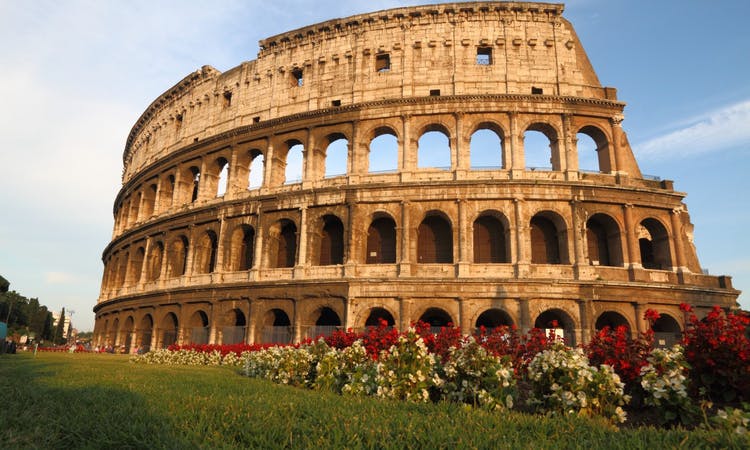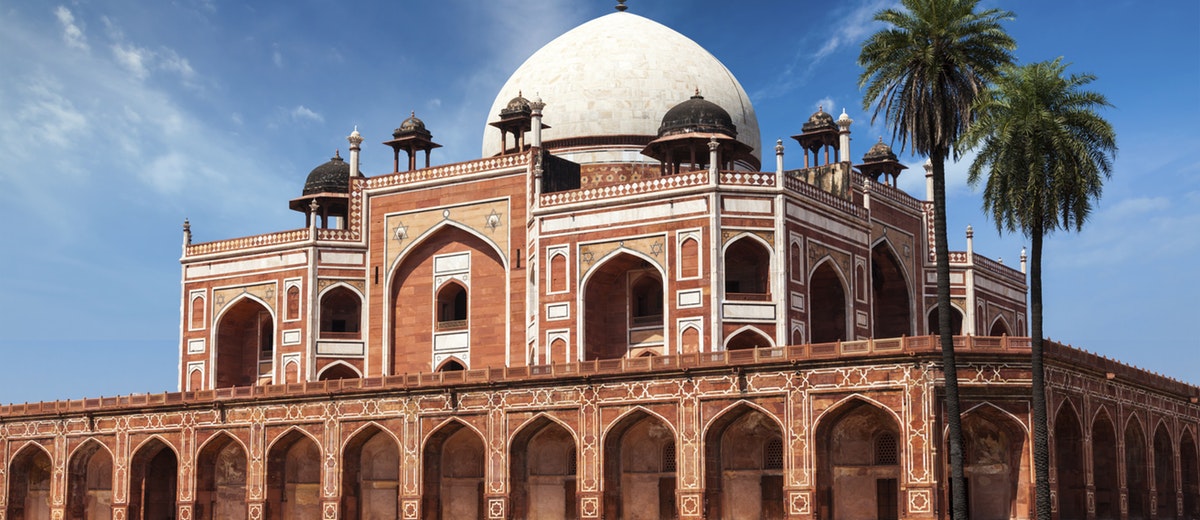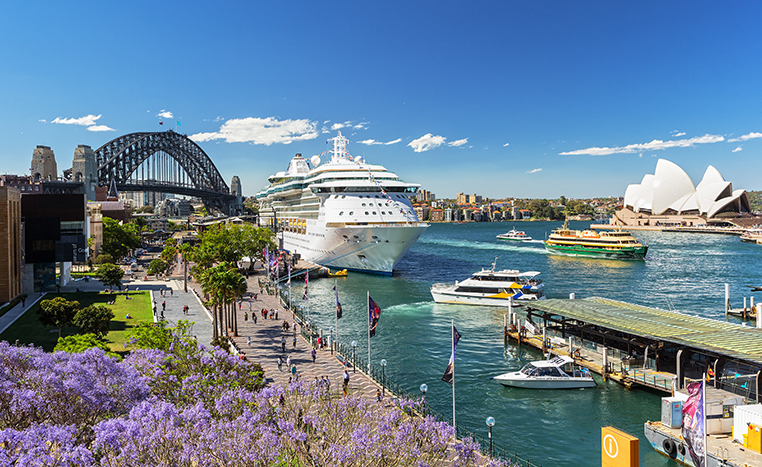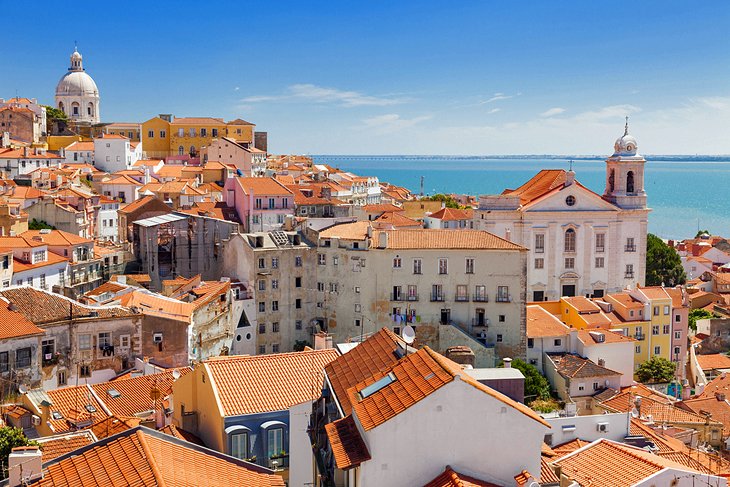By Chelsea Wolfe
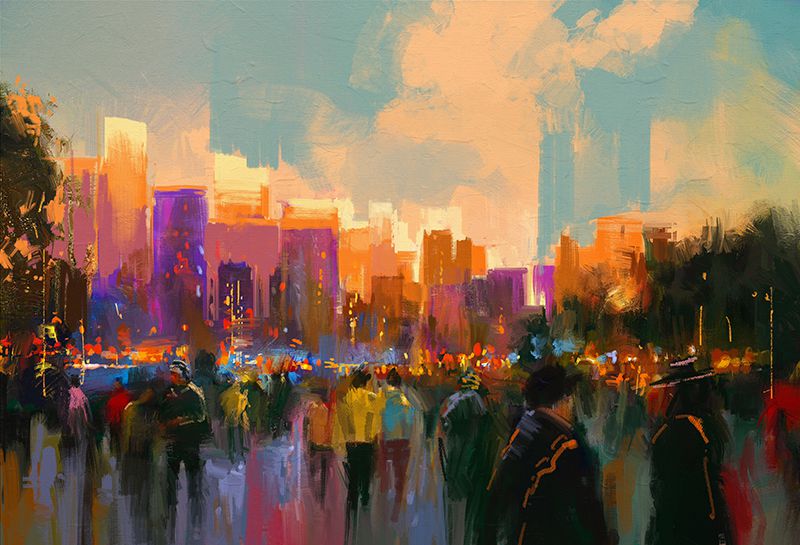
There is an ongoing debate on whether tax dollars should be going towards developing creative or artistic opportunities within a city (Debate, n.d.). While many opinions oppose money going towards art exhibits, new bridges or building designs, there is increasingly more research showing a positive correlation with creativity and economic growth (Boccella & Salerno, 2016). Not only is it vital for cities to enhance their creativity it is also important that they encourage cultural growth (Boccella & Salerno, 2016). As said by the Community Foundations of Canada organization, “The arts have the power to build a greater sense of belonging. From healthier and more meaningful lives; safer, more resilient and more inclusive communities; flourishing culture and identity; and greater community participation has an extraordinary capacity to transform our lives and our communities.” (Calgary Arts Development Authority, 2018). The ultimate goal of a creative and cultural economy is to strengthen the economy, increase citizen engagement, and create a more resilient city.
A creative economy is a driving force within a city, it strengthens the development of social, financial, and cultural aspects (Unitar, n.d.). Cities can leverage their current economy, culture and accessible technology to enhance these aspects (Kong & O’Connor, 2009). However, to grow these areas, creativity is one of the biggest factors to focus on (Kong & O’Connor, 2009). Creativity is defined by Hennessey and Amabile, as the ability to adapt to change through solving problems (Hennessey & Amabile, 2010). Creativity brings people together, not only to work on projects, but to share experiences and increases the overall prosperity within a city (Hennessey & Amabile, 2010). As said by Charles Montgomery in Happy City, “The most important psychological effect of the city is the way in which it moderates our relationships with other people” (Montgomery, 2013, p.61).
While the cultural economy also focuses on the result of resilience and strength within a society, the main difference is that culture brings together a variety of perspectives which is integral in growing an economy (Kong & O’Connor, 2009). The creative and cultural economies work together as they cross paths to increase overall economic growth and citizen engagement (Anheier, 2008).
What happens when creativity and culture in a city are enhanced? There are cities all around the world that have experimented and been successful in enhancing the lives of those within it and set strong examples for other cities to learn from. These following exemplar cities show their experiments within the creative and cultural economies; The city of Portland in the United States of America, Rome in Italy, New Delhi in India, Sydney in Australia, and Lisbon in Portugal.
“A creative economy is the fuel of magnificence.”
– Ralph Waldo Emerson
Cities are complex and dynamic systems that change over time (Lobdell, n.d.). Although disruptions such as political unrest, economic despair, and increasing crime rates can cause this system to shift negatively (Lobdell, n.d.). A negative shift causes challenges and needs support to be shifted to address these problems (Lobdell, n.d.).

Portland, in Oregon USA is using the creative economy to create a positive shift in the housing crisis (Portland, 2018). Not only have housing prices been increasing, affordable performance space and studios have had a huge incline in price (Portland, 2018). This has created a problem for artists living and working within the city (Portland, 2018). Even before all of these problems, Portland has been known for its vibrant and diverse economy, with a strong art presence in performance, fine arts, as well as a big craft scene (Portland, 2018). Due to the issues the city has been facing, they developed a plan to work on the creative and cultural economy (Portland, 2018). They began with a creating a set of values that would guide them to their long-term goals of prosperity (Portland, 2018). Their main value was to push forward proposals in which had a strong emphasis on protecting the creative economy within the city, regardless of the funding that was available (Portland, 2018). The city also began to value policies that encouraged development within the creative sectors and preserved the history of the city (Portland, 2018). By increasing the direct investment in these policies and proposals, there would be better control of the creative economy (Portland, 2018).
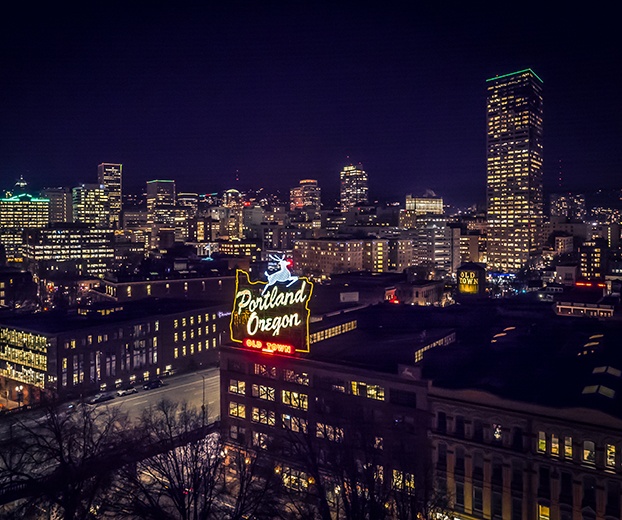
Portland is currently home to many emerging artists, amazing parks and an attractive city center (Hobica, 2012). They are becoming increasingly popular to travel to since they are known for their art scene, local breweries, coffee, food, and tiny home movement (Hobica, 2012). The Oregon College of Art and Craft is one organization that is embracing the city’s artistic nature and encouraging the further growth of the art sector (Oregon College of Art and Craft, n.d.).
At Oregon College of Art and Craft, students are able to explore a variety of options in their education, and they are given a chance to show their art through the gallery and art exhibits put on by the school (Oregon College of Art and Craft, n.d.). The school also is known to foster strong relationships with students and mentors in order to strengthen the community and encourage the students to be critical and innovative thinkers and makers (Oregon College of Art and Craft, n.d.). The school gallery is open to the public and is known as the Hoffman Gallery, in which has around 50,000 visits a year (Oregon College of Art and Craft, n.d.). This encourages students, tourists, and other citizens to explore the art around the city and have a deeper understanding of the cultural impacts of the craft industry in Portland (Oregon College of Art and Craft, n.d.).
The city also has initiatives to make sure they are representing the diversity within the city, and reaching all communities (Portland, 2018). They currently work with organizations such as “Latino Network, the Muslim Educational Trust, Milagro Theater, New Expressive Works, Disability Arts and Culture Project, PHAME, and Arts Workers for Equity. We will also work with our trusted partners at the Oregon Arts Commission, Oregon Cultural Trust, the Multnomah County Cultural Coalition, and the RACC” (Portland, 2018). This ensures they continue to develop an inclusive and diverse city.
The city feels very strongly that due to their creative economy that they are thriving (Portland, 2018). A powerful message from the municipality of the city expresses their positive impacts from their creative economy; “Our creativity drives innovation, inspires the founding of new companies, draws new employers and residents to our city, provides good jobs, and helps burnish our quality of life. Every aspect of our community would suffer without our creative culture.” (Portland, 2018).
“Every member of humanity has the potential to become members of the success story of a creative economy.”
– Park Geun-Hye, President of the Republic of Korea
Rome, in the Lazio region of Italy, is city with a rich cultural and artistic history in which people from all over the world travel to visit (Fiorentino, 2018). Much like Oregon, this city has been facing problems that have disrupted the economy. Rome has had huge tensions effecting their social and political sectors of their economy (Fiorentino, 2018). This problem runs deep, as the city is old and has been a place of political experiments over the last few decades (Weststeijn, 2018).
In order to begin to rebuild Rome and shift their city into a thriving creative and cultural economy, the government intervened to create a plan. Rome worked towards this through government initiatives to strengthen urban planning, cultural regeneration and restructure the city (Battaglia, 2014). The City believed that the key factors to its growth would come from focus on the socio-economic and creative development throughout the various sectors on the city (Battaglia, 2014).
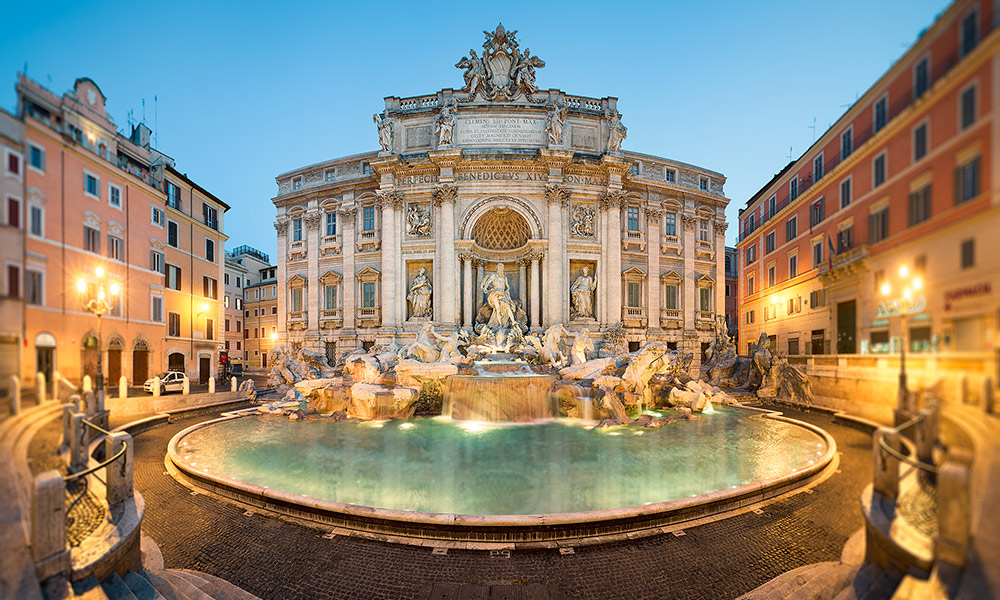
An example of this is the creation of a creative and cultural industry hub within the city, in which received 40 million euros in 2016 (Fiorentino, 2018). This hub was situated in an area of the city called Cerimant, in which was priory used for military services. Placing the hub here has opened this area, which used to be private (Fiorentino, 2018). This had not only created more innovation in this area, nonetheless has boosted employment rates of young adults and artists (Fiorentino, 2018). The hub has plans to work with the Opera Theater of Rome, in which will bring more performers and artists to the area, and further developed the creative class (Fiorentino, 2018). There has also been more development of shared service accommodations such as co-working space, and community labs (Fiorentino, 2018). These accommodations host a variety of sectors and increase the network and community of entrepreneurs and innovative thinkers (Fiorentino, 2018).
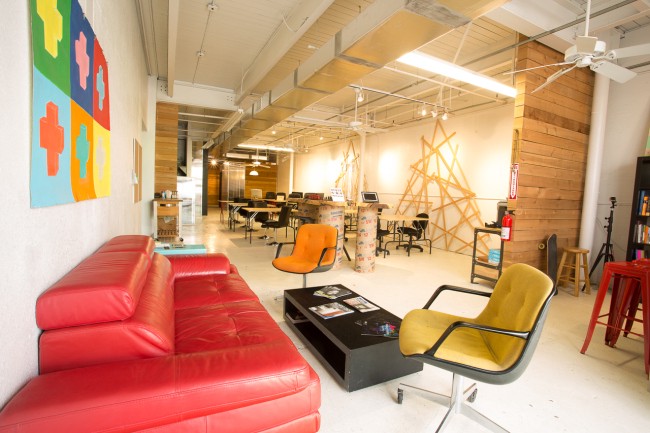
Pietralata is a neighborhood within Rome that has undergone intense restructuring, due to political and economic destruction (Battaglia, 2014). Although the neighborhood is still being re-built and is emerging within the city, it is quickly becoming a well known, well visited area of Rome (Battaglia, 2014). This is due to initiatives such as Lanificio 159. Lanificio 159, is an area in Pietralata where experimentation of arts and culture is welcomed (Blocal, n.d). This is a whole block of space within the neighborhood, dedicated to bringing people together to experience food, entertainment, art, and music (Blocal, n.d). This space is small, with only 3500 square meters to be shared (Blocal, n.d). However, this does not impede the amount of culture and creativity with in it. This area is expressed as a “a centre of creation, exhibition and fruition of contemporary art” by its owners (Blocal, n.d). Through the power of this area in the city, and their use of workshops, restaurants, urban gardens, and creative markets, it has quickly become another flourishing hub of the city (Blocal, n.d). The city continues to work on generating policies to implement this planning and build a prospering environment, both creatively and culturally.
India is considered one of the fastest developing countries in the world, although this has not always been the case (Stolarick, 2013). India has been going through huge changes to emerge as a global leader (Stolarick, 2013). New Delhi in India is a prime example of how the country has been enhanced and becoming rich with creative and cultural prosperity (Rediff, 2013).
The city of New Delhi recognized that there was a plan in which needed to be put in place so that it could keep up with the changing global economy (Stolarick, 2013). They call this plan the three T’s, which includes bringing technology into cities, building talent within the city, and promoting tolerance (Stolarick, 2013). These values mimic the countries values very strongly and can be seen in other cities such as Chandigarh (Stolarick, 2013). Due to the fast-changing external environment of India and New Delhi, keeping up with technology is important in becoming an emerging nation and crowing the economy (Stolarick, 2013). Talent and tolerance are just as important since strengthening the creative class needs talented and innovative people, where building tolerance in a city will help to keep the city resilient as it quickly progresses (Stolarick, 2013).
New Delhi has a strong emphasis on culture with deep rooted traditions and values (Delhi Capital, n.d.). This is shown through the cultural events and the artistic sector in the city, such as in art and craft museums, galleries, and celebrations with music (Delhi Capital, n.d.). Much like Portland in the USA, New Delhi strongly emphasizes their artisans and craft makers, in which they have developed many studios, academies and galleries around (Delhi Capital, n.d.). Craftsmanship is a specialty in New Delhi where artists practice embroidery, gold enameling, pottery, toy making and more. Embroidery also called Zardozi, is a well known and very well practiced craft (Delhi Capital, n.d.). The method to this craft is a long and delicate practice where artists use gold thread with silk and velvet to make beautiful designs (Delhi Capital, n.d.). This process takes many hours and a high level of concentration but is popular in markets (Delhi Capital, n.d.). Many of these craftsmen work around Matia Mahal in New Delhi, an area flourishing with creativity and culture (Delhi Capital, n.d.).
New Delhi is a popular tourist destination which brings in people from all over the world to explore its art and culture (Art of Scuba Diving, n.d.). The National Museum of New Delhi explores the rich and deep history of India from 5000 years ago to contemporary times (Art of Scuba Diving, n.d.). This museum enhances and develops this city’s creative and cultural economy as it is one of the largest museums within the country (Art of Scuba Diving, n.d.). The vision and mission of the museum is to create a centre of cultural and creative enjoyment, and enhance the interaction between people and the identity of the city (National Museum India, n.d.). The museum is home to over 200,000 pieces which include exhibits such as photography, sculptures, literature, fashion, and more (National Museum India, n.d.). New Delhi is building a strong creative and cultural economy by not only leveraging traditional art forms and historic objects, as well as by encouraging economic growth through innovative sectors (Rediff, 2013). As the city is the top ranked for India’s creative economy, they are apart of the 45 million entrepreneurs that contribute to all of India’s economy (Stolarick, 2013).

http://www.nationalmuseumindia.gov.in/
The city of Sydney in Australia is the largest and most populated in the country with around 5 million people (Population Australia, 2019). Although Sydney is larger in size, compared to other Australian cities, it also faces problems of financial and economic despair (Morgan, 2018). There is a current poverty gap of around 32% in the country, which is affecting Sydney (Morgan, 2018). The increasing problems of high unemployment rates, the energy crisis’s, and high housing prices have been felt all over the country (Morgan, 2018). However, Sydney has taken action to limit the impact of this and to build the economy, citizen engagement and the city’s cultural identity (Morgan, 2018).
The city has implemented a strategic plan in order to put policies in place that will lead to prosperity and economic growth (Stevenson, 2017). Creative sectors within the city comprise of broadcasting, fine arts, music, literature, design, and information technology development (City of Sydney, n.d.). Because of the big rise in technology as a force for change, the digital economy has been a point of focus (City of Sydney, n.d.).
An example of this is a collaboration called City Talks (City of Sydney, n.d.). This is a networking event in which creates a platform to discuss issues facing the city and the digital world (City of Sydney, n.d.). City Talks brings in professionals and leading experts from local communities and around the world to find solutions within the innovative and creative sectors and how technology can work together to increase the city’s economic creativity (City of Sydney, n.d.). On May 22nd, 2018 a panel of business leaders spoke about how technological development is helping to build the creative economy (City of Sydney, n.d.). Although they discussed implications to this, they also explained that technological innovation is encouraging growth and strength within creative industries (City of Sydney, n.d.). Jim McKelvey the cofounder of Square had a chance to be a part of the conversation (City of Sydney, n.d.). Square is an app that allows financial transactions almost anywhere (City of Sydney, n.d.). McKelvey dove into how with this app and other technological advances like it, it has increased the number of successful small business, in which have helped the economy (City of Sydney, n.d.). The City Talks events are a great way for Sydney to bring in intellectuals and professionals, which helps to drive innovation by beginning conversations and setting wheels of experiments in rotation (City of Sydney, n.d.).
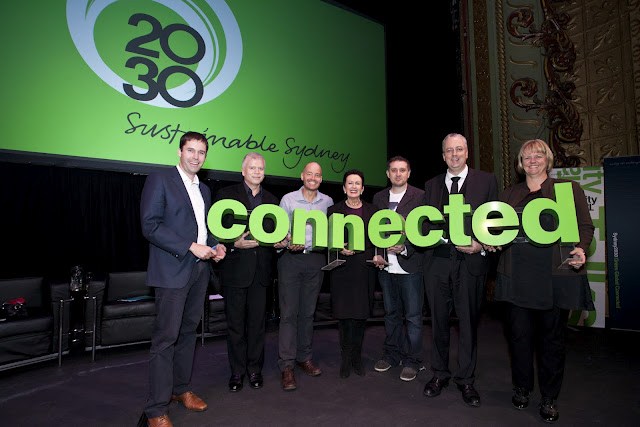
Another industry that has had a great effect on the cultural economy in Sydney, is tourism (Daley, 2016). While tourism has brought large crowds to Sydney, furthering helps the economic growth, this has also given more opportunities for indigenous art work and history to be built into the city (Daley, 2016). Indigenous culture of Australia has been built into the tourism industry, to teach both citizens and visitors (Daley, 2016). Sydney currently has the largest collections of public indigenous art which can be seen in museums and galleries, where as historical ceremonial sites can be found in both the Royal National Park and the Ku-ring-gai Chase National Park (Sydney, n.d.). The Eora people are indigenous to the area in which Sydney is now built (Sydney, n.d.). Sydney also has the greatest number of indigenous peoples living within the city (Daley, 2016). Sydney explores more of the culture and history of the Eora people through walking tours in the city called Barani meaning “yesterday” (Daley, 2016). On this walking tour people can experience the connection with the local areas in the heart of the city (Daley, 2016). The abundance of indigenous culture, art, and history continues to build citizen engagement in the city and creates an emphasis on the importance of understanding indigenous traditions and knowledge in Sydney (Stevenson, 2017).
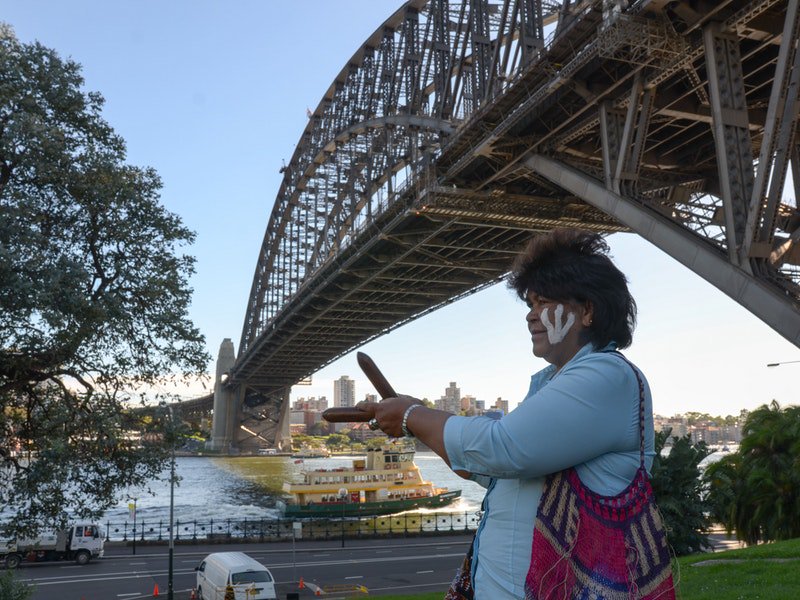
Lisbon in Portugal was greatly affected by the economic recession in 2008 (Wharton, 2018). They began experiencing economic disruptions as early as 2003 and have only begun to recover over the last few years (Wharton, 2018). To move past this tough nationwide downturn that Portugal was experiencing, they put aside all imposed ideas of where they measured within the economy (Wharton, 2018). By doing this they began to relinquish hope and has seen a boost in business, and a huge growth since this point in time in 2015 (Wharton, 2018). Cross innovation and creative industries are two strong assets that Lisbon has in which have contributed to the growth of the economy (Oliveira, 2016).
In Lisbon is a global incubation agency called Kwamecorp in which focuses its activities on innovation, social projects and investing in businesses (Creative Economy, n.d.). This agency actively promotes their strong values of a creative healthy lifestyle (Creative Economy, n.d.). They promote these values because they understand that in order to see growth in an economy, these three things are vital to success (Creative Economy, n.d.). This agency takes current problems facing companies from around the city and works together in a community to find a solution by identifying patterns (Creative Economy, n.d.). They don’t always stop at the first solution, since they understand that creative and economic growth does not happen with the first solution, rather it can go through many iterations (Creative Economy, n.d.). This agency encourages a more transparent, open, and creative economy within the Lisbon society (Creative Economy, n.d.).
Lisbon is also known for its folk art and tourism in which expands their cultural and creative economies (Vieira Santos, 2016). The city is home to the Folk Art Museum which has been around since 1948 (Lisbon, n.d.). The museum explores Portuguese traditions and history through an all-comprehensive experience (Lisbon, n.d.). There is a strong focus on historical craftsmanship, including items such as furniture, ceramics, agriculture tools (Lisbon, n.d.). Exploration of tradition, art, and culture are important for a city with a rich history (Vieira Santos, 2016). The strong emphasis within the city has benefited the economy and encouraged growth.

Through the five cities explored, Portland, Rome, New Delhi, Sydney, and Lisbon there can be found commonalities. Many of the cities faced challenges in their economies due to affordability or economic downturns. Due to the housing crisis in Portland, many artists were struggling to find places to practice their art as well as live. Sydney was also facing problems with housing affordability and poverty gaps within their city. In both of these cases the cities used a mis of culture and art to bring the city closer to its values. Although they may not be in perfect harmony, both cities are better off and their creative and cultural economies are stronger.
As most of the cities had strong emphasis on their history of craftsmanship, New Dehli and Lisbon focused a lot of their attention on the history of craftsmanship and the artistic approaches to crafts. These cities had deep and rich histories, in which they promoted through museums. This helped the cities to build citizen engagement and grow their economies.
In all these cities, the government had a strong involvement in putting forth a plan to support and increase the creative and cultural economies. As one example, Rome had experienced political tensions in which the government stepped in to develop parts of the city to create a space for innovation. Each city has had their governments has put a strong emphasis on policies and the importance of using innovation, culture, and art to create a more prosperous city.
These five cities have revealed the positive benefits to enhancing a city’s focus on their creativity and culture. Although each city is very different from one another and are situated all over the globe, there are strengths to understanding key strategies that worked for them. These cities have not reached their long-term goals for their creative or cultural economies. However, the cities continue to move towards them. Another take-away is, that change is inevitable, and with change comes a need to adapt strategies and re-focus goals within the cities. Cities can leverage their strengths and weaknesses to learn from each other and experiment in their own cities.
“I call the age we are entering the creative age because the key factor propelling us forward is the rise of creativity as the primary mover of our economy.”
– Richard Florida
References
- Angelo Battaglia. (2014). Creative industries and knowledge economy development in Rome: the example of Pietralata District. Int. J. of Knowledge-Based Development, 5(3), 238–252. https://doi.org/10.1504/IJKBD.2014.065316
- Anheier, H. K. & Raj Isar, Y. (Eds.) (2008). The Cultures and Globalization Series 2: The cultural economy London: SAGE Publications Ltd doi: 10.4135/9781446247174
- Atkinson, R., & Easthope, H. (2009). The Consequences of the Creative Class: The Pursuit of
- Creativity Strategies in Australia’s Cities.(Report). International Journal of Urban and Regional Research, 33(1), 64–79. https://doi.org/10.1111/j.1468-2427.2009.00837.x
- Art of Scuba diving. (n.d.). 101 Awesome Places to Visit in Delhi, India, Retrieved from, https://artofscubadiving.com/places-to-visit-in-delhi-india/
- Blocal, G.(n.d). Pietralata and Montesacro: what to see in northern Rome ,https://www.blocaltravel.com/food/a-peaceful-spot-is-what-makes-lively-html
- Boccella, N., & Salerno, I. (2016). Creative Economy, Cultural Industries and Local
- Development. Procedia – Social and Behavioral Sciences, 223, 291–296. https://doi.org/10.1016/j.sbspro.2016.05.370
- Calgary Arts Development Authority. (2018). 2019-2022 strategic direction. Retrieved from https://calgaryartsdevelopment.com/wp-content/uploads/2018/10/CompleteCase-CalgaryArtsDevelopment-W.pdf
- Centre for Contemporary Art and Culture. (n.d.). Exhibits, Retrieved from http://mocc.pnca.edu/exhibitions/6765
- City of Sydney. (n.d.) Build your skills and knowledge, Retrieved from https://www.cityofsydney.nsw.gov.au/business/build-your-skills-and-knowledge/business-research-and-data/business-in-your-sector/key-industries/creative-and-digital
- Creative Economy. (n.d.) Portugal, Retrieved from https://creativeconomy.britishcouncil.org/places/portugal/
- Daley, P. (2016). Which is the world’s most indigenous city?, Retrieved from https://www.theguardian.com/cities/2016/jun/29/which-worlds-most-indigenous-city
- Delhi Capital. (n.d.). Delhi Culture, Retrieved from http://www.delhicapital.com/aboutdelhi/culture.html
- Debate. (n.d.) Should the arts be publicly funded?, Retrieved from https://www.debate.org/opinions/should-the-arts-be-publicly-funded
- Earnshaw, A. (1998). Creative services industry finds a niche in Portland.(Portland, Oregon). Business Journal-Portland, 15(32), 8.
- Fiorentino, S. (2018). Re-making urban economic geography. Start-ups, entrepreneurial support and the Makers Movement: A critical assessment of policy mobility in Rome. Geoforum, 93, 116–119. https://doi.org/10.1016/j.geoforum.2018.05.016
- Gibson, C., & Kong, L. (2005). Cultural economy: a critical review. Progress in Human Geography, 29(5), 541–561. https://doi.org/10.1191/0309132505ph567oa
- Hennessey, B., & Amabile, T. (2010). Creativity. Annual Review of Psychology, 61.
- Hobica, G. (2012) 10 Things We Love About Portland, Oregon. Retrieved from https://www.huffpost.com/entry/ten-things-we-love about_n_1377069?ec_carp= 5972678436035134802
- Impossible. (n.d.). About, Retrieved from https://www.impossible.com/
- Kong, L., & O’Connor, J. (2009). Creative economies, creative cities Asian-European perspectives . Dordecht ;: Springer. https://doi.org/10.1007/978-1-4020-9949-6
- Lisbon. (n.d.) Folk Art Museum, Retrieved from http://www.lisbon-tourism.com/en/lisbon attractions/museums-and-galleries-in-lisbon/folk-art-museum.html
- Lobdell, C. (n.d.). Systems thinking. Evaluation and Program Planning., 31(3), 299–310. https://doi.org/info:doi/
- Montgomery, C. (2013). Happy city: transforming our lives through urban design. New York: Farrar, Straus and Giroux.
- Morgan, R. (2018). Economic Issues dominate Australians’ problems in 2018, Retrieved from http://www.roymorgan.com/findings/7504-most-important-problems-australia-the-world-february-2018-201803051043
- National Museum India. (n.d.). Vision and Mission, Retrieved from http://www.nationalmuseumindia.gov.in/about-vision-mission.asp?lk=ab1a
- Oliveira, J.M., Laranja, M, Lahorgue, M.A., & Figueiredo Born, H. (2016). Cross Innovation approach and the creative industries: a case study in the city of Lisbon, Portugal.
- International Journal of Innovation, 4(1), 01–12. https://doi.org/10.5585/iji.v4i1.68
- Oregon College of Art and Craft. (n.d.). About, Retrieved from https://ocac.edu/about
- Population Australia. (2019). Sydney Population 2019, Retrieved from http://www.population.net.au/sydney-population/
- Portland. (2018). A Plan for Preserving and Expanding Affordable Art Space in Portland. Retrieved from https://www.portlandoregon.gov/fish/article/667747
- Picture of Rajasthan. (n.d). National Museum New Delhi, Retrieved from https://www.pictureofrajasthan.com/delhi/New%20Delhi/national-museum-new-delhi
- Rediff. (2013). Delhi most creative state in India, Retrieved from, https://www.rediff.com/business/slide-show/slide-show-1-delhi-most-creative-state-in-india/20130507.htm#2
- Stevenson, D., & Magee, L. (2017). Art and space: Creative infrastructure and cultural capital in Sydney, Australia. Journal of Sociology, 53(4), 839–861. https://doi.org/10.1177/1440783317744105
- Stolarick, K. (2013). Understanding the creative economy in India. Toronto, Ont: Martin Prosperity Institute.
- Sydney. (n.d.). Aboriginal Culture in Sydney, Retrieved from https://www.sydney.com/things-to do/aboriginal-culture
- Unitar. (n.d.). What is the creative economy? Retrieved from https://www.unitar.org/ksi/what-creative-economy
- Vieira Santos, J., & Silva, J. (2016). Creative folk art and cultural tourism in the city of Loulé (Algarve/Portugal). Revista Brasileira de Pesquisa em Turismo, 10(2), 212–232. https://doi.org/10.7784/rbtur.v10i2.1060 folk art
- Weststeijn, A. (2018). The Roots and Consequences of Italy’s Political Experiment, Retrieved from https://spectator.clingendael.org/en/publication/roots-and-consequences-italys-political-experiment#
- Wharton. (2018). Portugal’s Economic Recovery: How Much Came from Ditching Austerity?, Retrieved from http://knowledge.wharton.upenn.edu/article/portugals-economic recovery-how-much-came-from-ditching-austerity/
